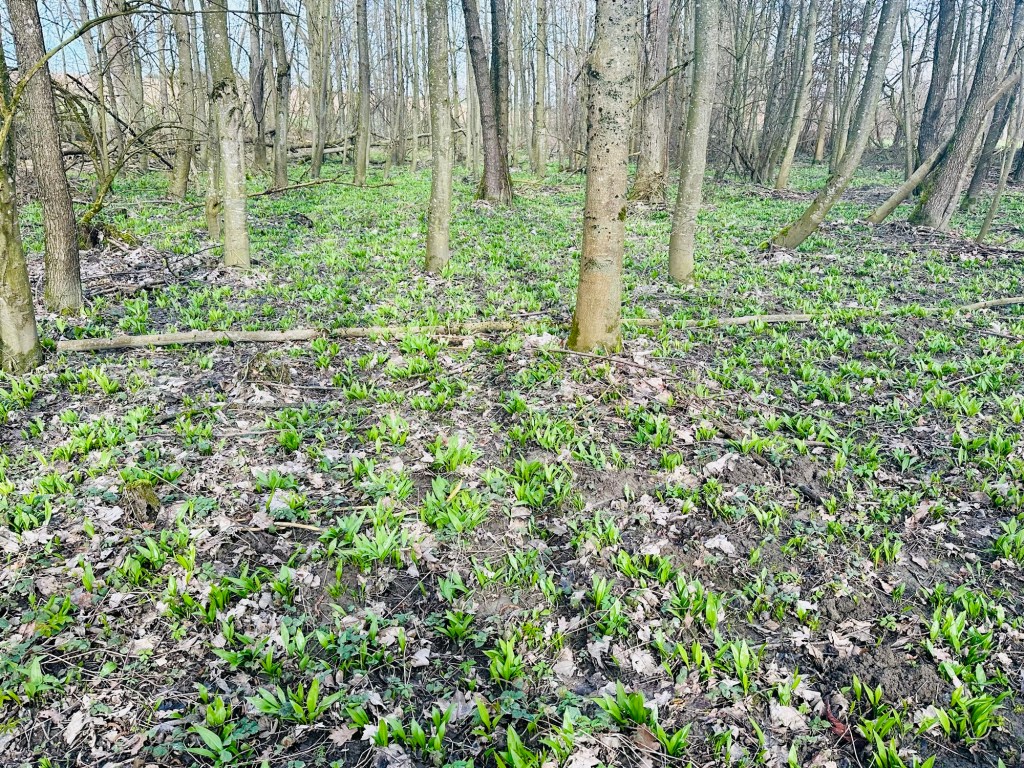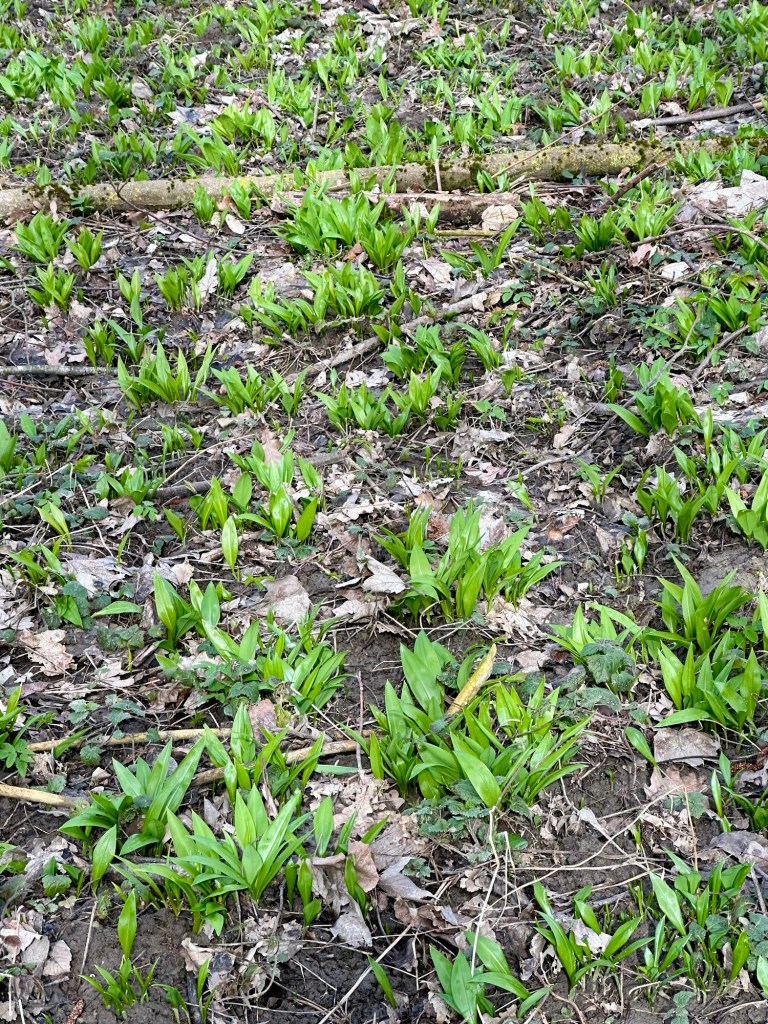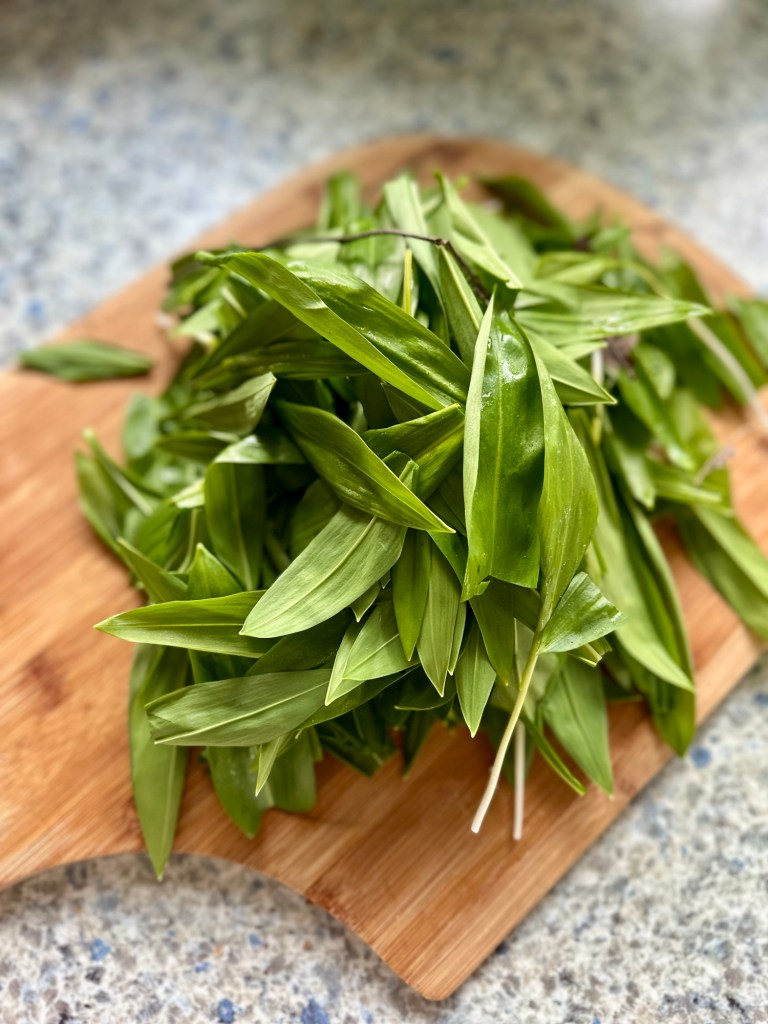It’s springtime in Austria, and one sure sign of it is liverwort starting to bloom, and tender wood garlic leaves pushing through forest soil.

I went to the forest this morning to see if the wood garlic was big enough to be picked. I didn’t know anything about wood garlic before I moved to Austria. In Finland, it is grown only in a few places on the West Coast and protected. That means you should not pick it. In Austria, it grows wild. Almost everywhere, and you are allowed to pick for your own use. Wood garlic is on every restaurant menu this time of year. Variations are many, and chefs make new ways to use them every year.

Allium ursinum, known as wild garlic, ramsons, cowleek, buckrams, broad-leaved garlic, wood garlic, bear leek, Eurasian wild garlic or bear’s garlic, is a bulbous perennial flowering plant in the amaryllis family Amaryllidaceae. It is native to Europe and Asia, where it grows in moist woodland.It is a wild relative of onion and garlic, all belonging to the same genus, Allium.

All parts of the wood garlic plant are edible and have culinary uses, including the flower which can be used to garnish salads.
The leaves of the wood garlic are the most popular part to be used in food. Leaves can be used in raw salads and carry a very subtle garlicky flavor similar to that of garlic chives. When picked, the leaves bruise, making them smell even more potent. When cooked, the flavour of the leaves becomes softer and sweeter. The bulb can be used in a similar way to clove garlic.

Leafs can be used as salad, herb, boiled as a vegetable, in soup, or as an ingredient for a sauce that may be a substitute for pesto instead of basil. Leaves are also often used to make garlic butter. The stems are preserved by salting and eaten as a salad in Russia. The bulbs and flowers are also edible. Flowers can be pickled to make wood garlic “capers” or as decoration.

Plants that may be mistaken for wood garlic include lily of the valley, autum crocus, cuckoo point, and green false hellebore or Veratrum album,all poisonous. In Europe, where ramsons are popularly harvested from the wild, people are regularly poisoned after mistakenly picking lily of the valley or Colchicum autumnale.
Grinding the leaves between the fingers and checking for a garlic-like smell can be helpful, but if the smell remains on the hands, one can mistake a subsequent poisonous plant for wood garlic. When the leaves of wood garlic and cuckoo point first sprout, they look similar, but unfolded cuckoo points leaves have irregular edges and many deep veins, while wood garlic leaves are convex with a single main vein. The leaves of the lily of the valley are paired, dull green, and come from a single reddish-purple stem, while the leaves of wood garlic emerge individually and are initially shiny and bright green.

This is my favorite wood garlic soup recipe. You don’t need much, and it tastes best with dark sourdough bread.
- 3 large potatos
- 400 g wild garlic
- 1 tablespoon olive oil
- 2 onions
- 1 garlic clove
- 1.5 liters water
- 1 bouillon cube
- 60 ml heavy cream
- Salt, Pepper, Nutmeg
Preparation
For the wild garlic soup, dice the potato, finely chop the onion and garlic, and sauté in oil. Pour in water, add the bouillon cube, and let it simmer for 10 minutes. Roughly chop the wild garlic and add it to the boiling soup; let it cook for 2-3 minutes. Then puree with an immersion blender and add heavy cream. Add the rest of the spices according to your own taste. Serve with sourdough bread.
Recipe Notes
How long is wild garlic usable? The usual way to use wild garlic is fresh, but it’s only usable for 1 to 2 days in the refrigerator’s vegetable compartment.
However, there are other ways to preserve the herb throughout the year:
It’s possible to freeze wild garlic. Wash, dry, and chop the leaves, then place them in a freezer bag or similar container for freezing. The second option is to dry wild garlic. Although wild garlic can be dried in the oven, it loses many aroma compounds. A food dehydrator can be helpful in this case. After drying, the wild garlic leaves should be stored in a light-protected, aroma-preserving environment. In both cases, wild garlic is usable for about 6 months. You can also preserve it in oil. Cut the wood garlic very small or puree with oil. Use oil that does not taste like sunflower oil.
